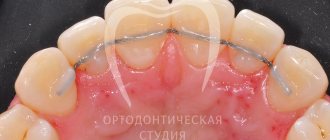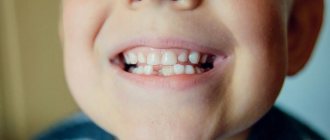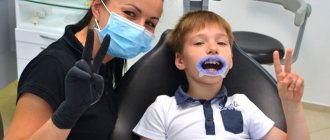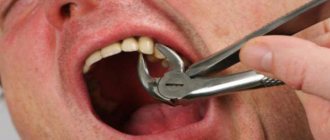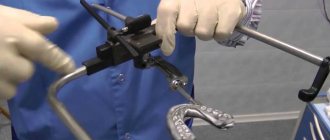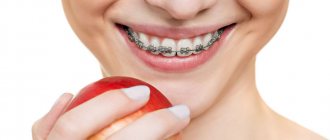From childhood we are taught to keep our back straight and are regularly checked for spinal curvature. However, they never explain why this is necessary. Perhaps if we understood the importance of posture for the entire body, it would be easier for us to monitor the straight position of our back without constantly shouting: “Hold your back!”
Most people are unaware of the relationship between posture and teeth. And no wonder, because there is little accessible and understandable information about this.
Meanwhile, it has been proven that incorrect posture leads to problems with joints and malocclusion. Feedback also works: bite affects posture.
Have you ever wondered what correct posture and a healthy back mean for a person?
Straight teeth and a healthy back: is there a relationship?
The importance of correct posture
In the 21st century, people spend most of their time sitting. We go to work sitting, work sitting, have lunch sitting, spend our leisure time sitting. And most likely, you are reading this text while sitting. It is not surprising that our body and posture in particular begin to adapt to a sitting position.
However, the optimal sitting posture for a modern person is a test for our musculoskeletal system. In this position, posture suffers the most. The need to sit for long periods of time causes serious back problems.
The importance of correct posture
What is posture?
Posture is a body position that is comfortable for a person when moving and at rest. A person takes this position unconsciously, relaxing, when he is not taking care of himself. There is even a special term for this - “motor stereotype”.
Posture consists of three components:
- muscles,
- ligaments,
- bone frame.
The body is held in space by the muscular system. Relying on gravity, the muscles build up the optimal vertical position of the body from the sections (head, chest, torso, pelvis, legs). To conserve energy, our body itself strives to take a position that does not require effort from the muscles.
A correctly aligned position of the body in space does not place a load on the ligamentous apparatus - and this is good, because ligaments are not capable of prolonged tension.
It is equally important that the load on the skeletal frame should be directed strictly along the spinal column. Otherwise, deformations in the bone structures will inevitably occur.
Violation at any of these levels leads to problems and is accompanied by back pain. However, the bone frame has a special role.
What is posture?
Skeletal structure: basics of osteology
The human skeleton is the collection of all the bones. There are an axial part (skull, spine, chest) and an accessory part (arms and legs). That is, in fact, the skull and spinal column are the main axis of the human body.
The spinal column consists of 32-33 vertebrae and has an S-shape due to bends:
- Cervical lordosis is a forward bend in the cervical spine,
- Thoracic kyphosis - backward bending in the thoracic region,
- Lumbar lordosis is a forward bend in the lumbar region,
- Sacral kyphosis is a backward bend in the sacrum.
Thanks to these bends, the spine absorbs the load, compressing and straightening like a spring. This helps prevent injury to the intervertebral discs and ligaments due to excessive load on the spinal column. The spine is involved in the movements of the head and is connected to the skull through several joints.
Skeletal structure: basics of osteology
Structure of the maxillofacial region and bite
At the top of the spinal column is the skull. In humans, the skull consists of 23 bones, connected to each other by bone sutures and one paired temporomandibular joint. This joint is extremely important: it fixes the lower jaw to the upper and is involved in the bite.
Occlusion is the nature of the closure of the dentition with the most complete contact of all teeth. The bite begins to form in early childhood - during the eruption of baby teeth. A dentist can detect problems with teeth closing as early as 5-6 years of age.
According to statistics, about 78% of children in the Republic of Belarus have an incorrect bite. What does this mean? In addition to affecting facial aesthetics and the processes of chewing, swallowing and breathing, malocclusion leads to problems with posture.
The tendency to consider occlusion separately from the musculoskeletal system is now outdated. It’s not news at all that the human body is an integral and balanced system. And bite is part of bone balance. An imbalance in the relationship of the jaws causes a chain reaction of imbalance in some other part of the spinal column or joints of the limbs.
Structure of the maxillofacial region and bite
General conditions
Existing or past diseases manifest themselves in the form of various inflammations and diseases of the oral cavity, teeth and gums.
- If in childhood you suffered from severe flu or measles, then in adulthood this can result in diseases of the periodontium (periodontitis, periodontal disease) and teeth (pulpitis).
- If your body suffers from a lack of water or it is difficult to remove it from the body, do not be surprised by bleeding and gum inflammation.
- Vitamin deficiencies, especially a lack of vitamin C, are the cause of loosening and even tooth loss.
- Diseases of the gastrointestinal tract manifest themselves in the form of a whitish coating on the tongue, cracks and inflammation of the tongue.
Each organ has its own tooth
It has been known since ancient times that the condition of a particular tooth can determine the disease in the corresponding group of organs. Today this is a scientifically proven fact. For example, by using the incisors above and below (teeth 1 and 2), diseases of the ears, bladder and kidneys can be diagnosed, and by the canines (3) the condition of the liver and gallbladder can be determined. Small molars (premolars 4 and 5) transmit data about the lungs and large intestine, and large molars (molars 6 and 7) about the stomach, spleen and pancreas, and the so-called “wisdom teeth” can tell about the condition of the heart and small intestine .
At the same time, affected teeth identified by a dentist during an examination do not always mean the presence of diseases in the corresponding internal organs. It happens that a patient presents with pain in apparently healthy teeth or even with phantom pain (a painful signal comes from an internal organ to the site of the extracted corresponding tooth). Knowing about these relationships, it is easier to identify the affected organs.
Specialists
| 4.9 126 reviews | Ponomareva Alla Vasilievna Gastroenterologist Experience 36 years Doctor of the highest category Admission from 2500 rub. |
| 4.9 30 reviews | Zholudeva Galina Grigorievna Gastroenterologist Experience 35 years Doctor of the first category Admission from 2500 rub. |
| 4.4 60 reviews | Fomina Anastasia Stanislavovna Gastroenterologist Experience 30 years Doctor of the highest category Admission from 2500 rub. |
Pain is a good signal
The connection between internal organs and teeth and the oral cavity is evidenced by medical statistics on patient treatment accumulated over many years. For example, bad teeth can be a source of headaches. Damage to molars - there is pain in the parieto-occipital region. A source of infection in the maxillary incisors can lead to pain in the frontotemporal region, and from diseased canines the pain can be concentrated in the temporal region. If you have problems with the teeth of the lower jaw, a migraine may develop, and it can only be alleviated by visiting a dentist.
Painful sensations in the upper and lower incisors are a reason to get checked for cystitis, otitis media, or treat chronic pyelonephritis. Pain in the first incisor is a possible syndrome of prostate adenoma, frontal sinusitis, tonsillitis, prostatitis, osteochondrosis. Aching pain in the fangs is possible with hepatitis or cholecystitis.
Chronic pneumonia can be diagnosed by pain in the 4th and 5th molars. The same focus of pain indicates colitis, advanced dysbacteriosis, an allergic reaction (rhinosinusitis, bronchial asthma, respiratory allergosis).
A dental problem is not just a dental problem
Pain in the quads above and below can be a sign of weak ligaments (shoulder, elbow, wrist, ankle and knee joints), chronic inflammation of the joints (for example, polyarthritis), diseases of the large intestine - diverticulosis, polyposis.
Sixes and sevens (molars) are beacons of gastrointestinal diseases (gastritis, gastric or duodenal ulcers), advanced anemia, chronic pancreatitis. Problems with the top six are a reason to get checked for tonsillitis and sinusitis, diseases of the pharynx and larynx, tumor formations in the thyroid gland, mastopathy, and inflammation of the appendages. If something is wrong with the lower sixes, there are problems with the arteries, atherosclerosis. But the lower sevens are problems with the lungs (chronic pneumonia, bronchitis, bronchial asthma), polyps in the large intestine, something is wrong with the veins (varicose veins, hemorrhoids).
Have your wisdom teeth been bothering you for a long time? Make an appointment not only with the dentist, but also with the cardiologist. Coronary heart disease, congenital heart disease and other cardiac diseases - in terms of wisdom teeth. Plaque and tartar can be a signal of endocrine system disorders, a sign of gastric ulcer.
Network of dental clinics KANO and physical therapy clinic KANO
The human body is an inexpressibly complex system. Everything is closely intertwined in it, even if the relationship does not seem obvious at first glance. Therefore, qualified treatment and recovery require an integrated approach from thinking doctors of different specialties. Such a unique concept can be found in Minsk in the KANO network of dental clinics and the KANO physical rehabilitation clinic.
Dentists of the KANO clinic network will provide comprehensive treatment for dental problems of any complexity: from professional oral hygiene to high-tech digital prosthetics and Zygoma zygomatic implantation.
Physical Therapy Clinic KANO
And at the KANO physical therapy clinic, specialists will offer you a comprehensive program for posture correction and joint rehabilitation, which includes physical therapy and therapeutic exercises, physiotherapy, kinesiotherapy and massage. A holistic approach brings full results!
On a note
You should not go to extremes and see any toothache as a serious disease of the internal organs. It could be ordinary caries and nothing more. After all, the cause of caries can be many different or a combination of several factors: past infectious diseases, stress, lack of microelements, metabolic disorders.
The listed symptoms only indicate that different systems of the body are interconnected. Moreover, this connection can also be the opposite: an infection from a diseased tooth can easily be transferred into the body with food and saliva. Damages often affect the cardiovascular system (increased blood pressure), the excretory system (the appearance of trophic skin disorders, increased sweating), and in some cases the nervous system.
During inflammatory processes in the teeth (caries, pulpitis), pain appears so acute that the person immediately grabs the pills and the pain goes away. It turns out that the signal from the diseased organ was never noticed. And the process of destruction does not slow down, foci of chronic infection arise, which can be a source of more serious disorders in the body (sometimes this can even result in a heart attack, meningitis, sinusitis). In order for the body to work smoothly, you need to contact the dentist in a timely manner. And at the same time, we should not forget that after treating a diseased tooth, it is advisable to examine the organs associated with it.
University
DOSSIER 'KP'
Naumovich Semyon Antonovich, Doctor of Medical Sciences, Professor. 1990-1994 – Deputy Dean of the Faculty of Dentistry. In October 1991, he was elected to the position of associate professor, from 1993 to the present time he has been the head of the department of orthopedic dentistry of BSMU. Author of more than 500 scientific papers, including 9 co-authored monographs, 12 patents.
— Semyon Antonovich, is it true that Belarusians have bad yellow teeth because of chlorine water from the tap?
— Teeth are primarily heredity, genes, even how the fetus developed in the womb is important. But after birth, nutrition and lifestyle come to the fore. Health depends primarily on yourself, and only 11-12% on medicine. Environment, nutrition, lifestyle - these are the three pillars on which health rests.
In addition, dental health can be improved. The republican prevention program contains the main idea - the use of fluoride preparations, it strengthens the enamel. To strengthen teeth, fluoridated table salt is produced in Mozyr.
From 2003 to 2008, I was the chief dentist of Belarus, the main thing is that we did not destroy what was accumulated during the Soviet era: even now in kindergartens and schools, children are examined by dentists, preventive measures are carried out, they are taught oral hygiene, and, if necessary, treatment. If it weren’t for this, our dental health indicators - the KPU index: caries-filling-extracted tooth - would be much worse. Today we are leaders in the post-Soviet space.
There are WHO requirements for each age regarding the number of remaining teeth. Let's take the indicative age category of 65-74 years: the latest European requirements for this age are 20 teeth. But our indicator is quite high: in 2013-2014, Belarusians of this age had up to 15 teeth.
- Is it true that Americans have good white teeth because they eat and drink everything with ice?
— No, rather because a small filling there costs about 100 dollars. The patient is motivated to get a filling, because the next stage is a crown for $600. And if you engage in prevention from a young age, you may not have to pay.
A lot depends on the person himself: how he takes care of his oral cavity, whether he brushes his teeth correctly, chooses a brush and paste. Universal advice - which is better? - no: each has its own characteristics, it all depends on the condition of the mucous membrane and enamel.
“It happens that young people remove 15-20 teeth”
— I heard that every tooth pulled out brings a person closer to old age: they say, the brain receives a signal and rearranges its work...
— The absence of even one tooth is of great importance, especially if it is a front one. But the absence of the so-called “six” is also a problem. If the defect is not closed, the neighboring teeth begin to move, and this is due, as you say, to signals from above. Teeth can move vertically, transversely, or in any other direction - along the line of least resistance. They can also shift at an angle of 5-7 degrees. As a preventative measure, we recommend making a temporary prosthesis – popularly called “butterflies” – to close the defect so that the teeth do not move. And then decide: to make an implant or a bridge based on nearby teeth.
— But the absence of one tooth is not an indication for intervention, or would you still not advise leaving even one hole?
— I wouldn’t recommend it, especially the sixth teeth. As a rule, they are the first of the permanent teeth to appear and the first to wear out; the load on them is colossal. When they are removed, people sometimes do not pay attention and live without a tooth. And after 10 years they come to us with complaints: “Doctor, the muscles on my face hurt.” If a person has lost key teeth, deformation of the dentition begins, and the temporomandibular joints become sensitive. The absence of even one tooth will manifest itself as unpleasant symptoms within 4-7 years.
— Some people are afraid to insert implants - it’s an operation! – especially now, when the number of cancer diseases is growing. And it’s scary to put on “crowns” - they say the teeth under them rot and collapse...
— If the supporting crowns are made with high quality, there will be no damage for 8-10 years. Yes, if the crowns are made poorly - we call them “pans” - a “greenhouse effect” develops under them: food and saliva get in, which leads to tooth decay.
Implants can be installed if the patient has sufficient bone tissue, the bone structure allows for manipulation and there are no contraindications. These include diabetes mellitus, thyroid diseases, and cancer.
Another contraindication is severe forms of periodontal disease, previously called periodontal disease. This is the exposure of the gingival margin, loss of bone tissue, loose teeth, which we most often remove. With such a disease, the implantologist will also refuse you: your own tooth does not take root, how will someone else’s tooth take root? Periodontal disease - when the bone is lost, but the tooth is intact, but must be removed - this is scary. Here, first of all, professional hygiene is important: removal of dental plaque and anti-inflammatory therapy of the gingival margin. Removing visible tartar is easy, but there are also stones under the gum. Sometimes it’s so far away that you can’t take a picture right away. Then they perform a patchwork operation: they peel off the gingival margin and this is the only way to remove the stone. Otherwise, it will mechanically destroy first the gum and then the bone.
The first signs of such a problem are bleeding gums, both while brushing your teeth and without. Plus visible changes: swollen gingival margin with a bluish tint. To recognize the problem at an early stage, every self-respecting person should go to the dentist twice a year.
- But they say that exposure of the roots of the teeth is an age-related feature, no?
— Yes, but often there is also a general pathology, for example, diabetes, blood diseases, and thyroid diseases. Young people with such diagnoses come to us at both 25 and 27 years old. I write the conclusion: “Remove 15-20 teeth.” And even more! There are teeth, but there is no bone tissue where they would be fixed. The teeth move even from a “gust of wind.” As a rule, we provide prosthetics for such patients only with removable dentures.
“If a dentist enters the profession with a counter in his eyes, he will not make a good specialist.”
“But even in such situations, when all the teeth have been removed, there is no need to panic. Yes, you need to get used to removable dentures, but life goes on. Let me give you the example of my grandmother: she had full dentures made in 1933, she was only 35 years old. As a result, she lived happily for 97 and a half years, 60 of them with complete dentures. When I offered to make her new ones, she just waved her hand: “They don’t make them like that now...” But I still reconstructed them several times, since such prostheses must be remade every 5-6 years. And as a specialist, I understand well that she would never have lived this long without them...
— I have a friend who, before leaving for America about 10 years ago, made himself new teeth: he pulled out his own and inserted beautiful, white implants. Two years later, the first thing that caught my eye was how his face had changed, how it was swollen or something. He complained: his joints hurt and it was difficult to eat. Is this poor-quality work or is it rather the body’s fault that it rejects something foreign?
- More likely, both. Unfortunately, this happens. The first attempts to make implants began in Minsk at the 13th dental clinic back in 1989. I then worked as deputy dean of our dental faculty, I was appointed chairman of the commission for evaluating those first experiments. The methods were rather weak, but our specialists were trained in Vilnius. The first steps were with problems, today I understand that those implants were not installed very well...
But 26 years have passed, and today there are practically no such problems, we are among the world statistics: implants serve the patient for 9-12 years or more. Yes, it happens that patients come to us - they were promised a lot, implants were installed, then crowns were made on them, people paid a lot of money - and after a year we remove and remove everything. It happens that prosthetics are carried out with numerous errors: in the upper jaw, for example, the implant is removed into the maxillary sinus, in the lower jaw - into the mandibular canal, inflammatory processes begin. But, thank God, such cases are rare.
The best school graduates come to our dental faculty, over the last 10-15 years - with a score from 370 to 400. Previously, the medical faculty was the best, now we have practically no competitors. We train general dentists who, after graduating from university, not only have good theoretical knowledge, but also have excellent practical skills in all areas of dentistry.
— It’s logical, I heard that dentistry is the easiest way to earn good money in medicine, the main thing is to open your own private office.
— Unfortunately, I also hear about this often. But this is not such an easy bread, it is associated with occupational hazards and great psychological and physical stress. If a person enters a profession with a calculator in his eyes, he will not make a good specialist...
“We once reduced the size of the lower jaw.”
“I would never have thought that a beautiful smile can be achieved with the help of braces: a person hasn’t smiled for half his life because of ugly, uneven teeth, and then one day he starts to shine!”
— I have been dealing with this problem for almost 40 years. When I started working in the late 70s, there was only one orthodontist in the entire Minsk region. At the regional dental clinic, he saw 80 patients in 6 hours of work: 40 patients had impressions taken, 40 had ready-made orthodontic plates applied. There were no braces yet, only removable devices.
Nowadays, with the help of braces, you can manipulate your teeth and dentition quite widely: move, reduce, expand. But braces can be used when the bite is formed: no earlier than 11-13 years.
In complex cases, an integrated approach to the treatment of such patients is needed. First, they undergo preparatory surgical operations. So, for a student from Syria - his chin protruded four centimeters forward - my teacher, Professor Chudakov, and I reduced the size of the lower jaw. And only then they installed orthodontic devices, straightened the remaining teeth and completed the treatment with dentures.
—What incident impressed you the most?
“Once a LAZ driver came to me; there were buses like this that were produced in Lvov. The rotating iron handle of the starter crushed half of his face, knocking out almost all his teeth, along with the alveolar processes (the part of the jaw where teeth grow from). My teacher, Professor Velichko, and I restored his jaws and made luxurious ceramic removable dentures. Later, years later, he came and thanked them for helping him improve his life: he got married and looked great.
I also remember when I was just starting to work, a young man approached me and asked me to do his wife’s teeth. They looked and gasped: she had 28 rotten roots and not a single tooth. And she is only 25 years old! We had to remove all the remains, it was impossible to restore them, and make removable ceramic dentures. In those days, no one did implants in our country. It turned out that my husband didn’t even know what was in her mouth, and we didn’t tell him either. She was a nice girl, I remember, I also advised her: “You know, don’t take them off at night - just for hygiene - don’t let her know anymore...”
Photo: DMITRY LASKO Komsomolskaya Pravda , February 9, 2016


